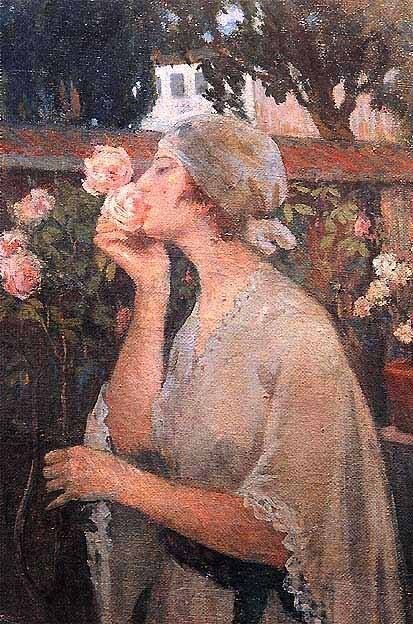Ibrahim Çalli: A Turkish Neoteric
Was was Ibrahim Çalli?
Born in 1881, painter İbrahim Çalli was only 17 years old when he left the small town of İzmir where he was born and came to Istanbul. As a young man in Istanbul, he did everything. He distributed newspapers and worked as a bailiff in courthouses and the big city was everything he dreamed of. One day, he found a way and showed the paintings he had made in his remaining time to the painter Şeker Ahmet Pasha. He was invited to the Sanay-i Nefise or the Faculty of Fine Arts today. He met Osman Hamdi Bey at the faculty where he excelled in his studies. With the contribution of this successful student life, he won the European exam with first place. Çalli got accepted into the École des Beaux-Arts, Paris. Durring his time in Paris, Çalli was heavily influenced by different art movements and libertarian understanding of painting from the west. When he returned to the Academy as a teacher in 1914, he was trying to express the free spirit he had known in Paris with "nude pictures". Çalli tried to instil the libertarian spirit in his students at the Academy. The ‘Çallı Generation’, also known as the ‘1914 generation’, was the forerunner of a radical change in Turkish painting.
A portrait photograph of Ibrahim Çalli SOURCE: Wikiart
This change can be briefly summarised as follows:
Until that day, the paintings made by looking at the photographs in closed workshops, away from contact with the open air were gone, and these paintings were replaced by paintings made in life, in the middle of the street, on the shore of the sea. The so called Çalli Generation took to the streets of Istanbul with paint cans on their backs and coffee tables in their hands and this started a new era in Turkish painting. The subjects of the paintings were not far from everyday life and the diversity of subjects that reflects daily life and extends from the scenes of Istanbul to the interior of the home spaces was the biggest innovation this generation brought to Turkish painting.
Among the painters of the 1914 period, there were some as strong as Çalli. But none of them attained Çalli's reputation with his sarcastic words, satire and life. Famous painter Çalli, after returning from Paris, produced works suitable for impressionism. He had a palette of light colours and an agile, edgy brush drive. Çalli also had a unique personality that set him apart from his contemporaries. He continued to work after his retirement and held various exhibitions. He passed away on May 22, 1960.
Effects of Western Artists on ‘Çalli Generation’
The Çalli Generation known by another name 1914 Generation; consists of artists who started their artistic life in the last period of the Ottoman Empire. After collapse of the empire, these artists took an important role in the development and changing of the field of painting of a rebuilt Republic in every sense. Despite the difficulties of the period producing artists had gone to west to develop themselves and have experienced the international art education. They had the opportunity to follow and examine the Western art by visiting the museum as well as the academic training they received there. The knowledge and experience they have acquired abroad were transferred to our country by the artists who return home with the outbreak of World War II. Instead of new art movements emerging in this period or classical painting idea that Çalli Generation artists received during their academic training, they adopted still applied Impressionism at that time, they produced works with the effects of this style and brought academic impressionism in our country. Artists were influenced by western artists in terms of style, subject, brush strokes and colours.
See below some examples of art created by Çalli and his contemporaries:
Left to right: Ibrahim Çalli, ‘Sunflowers’ , Ibrahim Çalli, ‘Woman Smelling Rose’, Feyhaman Duran, ‘Nude’, Hikmet Onat, ‘Male Model’
Ladies and gentlemen, I am Ecesu, your new History blogger who admires History, History of Art and Literature.
I am studying History of Art at university, and I am a junior student. I really admire Renaissance, Baroque, Modern and British Art. During my junior year, I became interested in Renaissance & Baroque Art.
Follow me @lilyarthistoran
Thanks for reading




